Q
What is the Insurance Costs of Toyota Harrier? See How Much Should You Pay!
In Malaysia, the insurance costs for the Toyota Harrier vary depending on the vehicle's model year, engine capacity, type of insurance coverage, and the owner's personal circumstances (such as age and driving record). Generally, the annual premium for comprehensive insurance ranges from approximately RM2,500 to RM4,500. The specific amount is determined by the vehicle's market value (Agreed Value or Market Value) as assessed by the insurance company and additional clauses (such as the No Claim Discount-NCD). For example, the newer Harrier Hybrid models may have slightly higher premiums than the regular petrol versions due to their higher vehicle prices and more expensive repair costs.
It is recommended that car owners obtain real-time quotes through the official websites of insurance companies or price-comparison platforms (such as CompareHero or PolicyStreet), and also pay attention to the promotional activities of different insurance companies. Additionally, auto insurance in Malaysia is divided into comprehensive insurance, third-party insurance, etc. Comprehensive insurance offers broader coverage but comes with a higher cost, while third-party insurance only compensates for the losses of the other party, which is suitable for car owners on a tight budget. When purchasing insurance, car owners should also take note of the excess and additional coverage options (such as natural disaster insurance), as these factors can affect the final premium.
Special Disclaimer: This content is published by users and does not represent the views or position of PCauto.
Related Q&A
Q
What Segment Does Toyota Harrier Belong to?
The Toyota Harrier is classified as a D-segment luxury SUV in the Malaysian market, positioned between the RAV4 and the Lexus RX. Its main rivals include other Japanese contenders like the Honda CR-V and Mazda CX-5.
Known for its sleek, coupe-inspired SUV design, premium interior materials, and a wide array of tech features, the Harrier is available in Malaysia with either a 2.0L naturally aspirated engine or a 2.5L hybrid powertrain, offering both front-wheel and all-wheel drive configurations.
While it’s marketed in Japan as a “luxury RAV4,” the Harrier is positioned as a more upscale model in Southeast Asia. It boasts larger dimensions and a longer wheelbase than typical C-segment SUVs, delivering interior space that rivals mid-size offerings.
For Malaysian buyers, the Harrier offers the appeal of an imported vehicle with a strong sense of refinement, yet at a more accessible price point than Lexus models. It also retains Toyota’s hallmark reliability and durability. Ideal for families seeking a blend of Japanese luxury and everyday practicality, the hybrid variant benefits from Malaysia’s Energy Efficient Vehicle (EEV) incentives, making it a more cost-effective option in the long run.
Q
What is the Reslae Value of Toyota Harrier?
The Toyota Harrier has shown excellent performance in terms of resale value in the Malaysian used-car market, mainly due to its brand reputation, reliability, and market demand. According to industry observations, Harriers that are 3 to 5 years old usually retain 60% to 70% of their original price. The specific performance depends on factors such as the vehicle's condition, mileage, configuration version, and maintenance records.
As a luxury SUV, the Harrier remains popular in the used-car market thanks to its stylish design, comfortable interior, and hybrid options (such as the Hybrid version). In particular, the third-generation models launched after 2017 have enhanced handling and safety features by being built on the TNGA platform, further strengthening its advantage in terms of resale value. It's worth noting that the hybrid version may have even greater potential for maintaining its value in Malaysia, where fuel prices are relatively high, because of its better fuel economy.
It is recommended that car owners have their vehicles regularly serviced at authorized service centers and keep complete maintenance records, which can significantly increase the resale value. Additionally, Malaysian consumers generally prefer locally assembled (CKD) models. So, there might be a slight difference in the residual value of the imported (CBU) Harriers, but the overall difference is not significant.
When getting to know the market conditions, you can refer to the quotes of similar models on local used-car platforms like Carlist or Mudah. At the same time, pay attention to the pricing standards of Toyota's official certified used-car program (Toyota Sure). These channels can provide more accurate references for residual value assessment.
Q
What is the engine displacement of the Toyota Harrier?
The Toyota Harrier comes in different models with varying displacements. Commonly, there are models with a 2.0L displacement, and the corresponding engine displacements are 1987mL or 1998mL. For example, models like the 2023 Toyota Harrier 2.0 Luxury and the 2023 Toyota Harrier 2.0 Luxury SE all have a displacement of 1987mL; the displacements of the 2018 Toyota Harrier 2.0T Premium and the 2018 Toyota Harrier 2.0T Luxury are 1998mL. CC is the abbreviation for cubic centimeter, which is equivalent to milliliters (mL) in the automotive field. So, the engines of these 2.0L-displacement Toyota Harriers are 1987CC or 1998CC. Additionally, there are reports that the next-generation models may be the first to be equipped with a newly developed 1.5-liter (1500CC) engine, and it will offer both Hybrid gasoline - electric and PHEV plug-in hybrid options.
Q
What kind of engine does the Toyota Harrier have?
The Toyota Harrier offers a range of engine options to suit different driving needs. Some models are equipped with a 2.0-liter naturally aspirated (NA) inline-4 engine. For example, the 2023 version delivers 173 PS, 127.2 kW at 6600 rpm, and 203 Nm of torque at 4900 rpm.
A turbocharged 2.0-liter engine was also previously available, producing up to 231 PS, with peak power at 5200 rpm and peak torque starting as low as 1650 rpm.
Depending on the engine variant, the Harrier is paired with either a CVT or automatic transmission, and most models feature front-wheel drive. These engine configurations offer a balance between everyday comfort and responsive performance to meet the preferences of a wide range of drivers.
Q
What is the Gearbox Type of Toyota Harrier?
The Toyota Harrier offers two types of transmissions in the Malaysian market, depending on the powertrain. Petrol-powered models are typically equipped with a Direct Shift-CVT, which combines the smoothness of a traditional CVT with simulated gear shifts for more responsive acceleration. Notably, it uses a physical first gear for better low-speed performance, reducing the rubber-band effect often associated with conventional CVTs.
Hybrid variants, on the other hand, feature an e-CVT, an electronically controlled continuously variable transmission optimized for hybrid systems. It uses a planetary gear set to deliver efficient power distribution and prioritize fuel economy.
Both transmission types have been locally tuned to suit Malaysia’s hot and humid climate, ensuring durability and smooth operation. Toyota-authorized service centers provide professional maintenance support, and regular checks of transmission fluid are recommended to maintain optimal performance.
For buyers, the choice depends on driving habits: the hybrid's e-CVT is ideal for daily urban commuting and fuel savings, while the petrol model’s Direct Shift-CVT offers a more dynamic driving experience.
Q
What is the PCD Size of Toyota Harrier?
The PCD (Pitch Circle Diameter) of the Toyota Harrier is typically 5x114.3mm. This means that the diameter of the circle formed by the five bolt holes on the wheel hub is 114.3mm. This specification is common in many Toyota models, including some Camry and RAV4 models. It is suitable for wheels with a center bore diameter of 60.1mm, and the bolt thread specification is generally M12x1.5.
For Malaysian car owners, when choosing to modify wheels, in addition to the PCD, they also need to pay attention to whether the offset value (ET value) and center bore size of the wheels match those of the original vehicle to ensure driving safety and avoid vibration problems. The road conditions in Malaysia are variable. It is recommended to choose lightweight and high - strength wheel materials, such as aluminum alloy, which can not only improve handling but also adapt to the local climate.
If you need to replace the wheels, you can give priority to products certified by JWL or VIA. This type of certification can ensure that the wheels meet international safety standards. At the same time, it is recommended to have them installed in a professional shop and perform dynamic balance adjustment to extend the tire life and ensure driving stability.
Q
Does Toyota Harrier Support Apple Carplay?
The Toyota Harrier does come with Apple CarPlay functionality in some models and model years, depending on the vehicle's configuration and release year. For instance, some versions of the Harrier launched in 2020 and later support this feature in the Malaysian market, allowing users to seamlessly connect their iPhones to the car's infotainment system and use apps like navigation and music. Malaysian consumers should check the specifications of the vehicle's infotainment system when making a purchase, as different versions may vary. The entry - level models might not have it as standard, but it can be added through a later upgrade.
Moreover, the addition of Apple CarPlay has significantly enhanced the driving experience, especially for users who rely on their phone's ecosystem. Toyota has also been gradually rolling out this technology across multiple models in recent years, such as the Corolla Cross and RAV4, which shows the brand's emphasis on meeting the demand for smart connectivity.
If you're thinking about buying a used or a new Harrier, it's advisable to directly inquire with local dealers about the specific configurations or take a test drive to experience the system's smooth operation, ensuring it meets your personal usage habits.
Q
What is the Tyre Brand of Toyota Harrier?
The factory-equipped tire brand on the Toyota Harrier in Malaysia varies by model year and trim level. Common OEM options include reputable international brands such as Bridgestone, Dunlop, and Yokohama which are all known for their durability and wet-weather performance, which are well-suited to Malaysia’s humid, rainy climate.
For example, the 2023 Harrier’s higher trims are often fitted with Bridgestone Alenza tires, which prioritize quietness and ride comfort. Entry-level models may come with more budget-friendly options such as the Dunlop PT3.
Harrier owners are advised to check tire pressure and tread depth regularly, especially ahead of the rainy season, to ensure optimal drainage and grip. When replacing tires, refer to the original specification (e.g., 235/55 R19). Alternatives such as the Michelin Primacy 4 or Continental UC6 are popular for their balanced performance in comfort and handling. However, mixing different tire brands on the same vehicle is not recommended, as it may affect driving dynamics.
Malaysia’s hot and wet climate can accelerate rubber aging. As a general guideline, tires should be inspected and possibly replaced every five years or 60,000 km. For vehicles parked for extended periods, avoid uneven pressure that could lead to flat spots or sidewall deformation.
Q
Is Toyota Harrier a Good Car? Learn the Pros and Cons Here!
The Toyota Harrier is a popular SUV in the Malaysian market. Its advantages include a spacious and comfortable interior, excellent fuel economy, and the reliable quality that Toyota is known for. It's especially suitable for family use or long-distance driving. The 2.0L and 2.5L hybrid versions offer diverse power options to meet different driving needs. The hybrid versions are particularly fuel-efficient when driving in the city, making them a great fit for the common congested traffic conditions in Malaysia.
In addition, the Harrier comes with comprehensive safety features. The Toyota Safety Sense system is standard, which includes functions like pre-collision warning and lane-keeping assist, enhancing driving safety.
However, the Harrier has its drawbacks. Its price is relatively high, especially for the hybrid versions, and the maintenance costs are slightly higher than some of its competitors in the same class. Also, the space in the third-row seats is rather cramped, not very suitable for adults on long-term rides.
For Malaysian consumers, if they have a sufficient budget and value brand reputation and fuel efficiency, the Harrier is a good choice. But if they are looking for better value for money or more spacious seven-seat accommodation, they can also consider other models in the same class. Overall, the Harrier offers a well-balanced performance in terms of quality, comfort, and technology, making it a worthy SUV to consider.
Q
What is the Width of Toyota Harrier?
The body width of the Toyota Harrier is 1,890 millimeters, making it one of the wider designs among SUVs in its class. This allows for generous lateral space inside the cabin, enhancing passenger comfort, especially for Malaysian families during long-distance travel. The Harrier's wide body also contributes to greater driving stability. Together with its streamlined shape, it reduces wind resistance and improves fuel efficiency.
The broader body also enables a more flexible interior layout. For example, the rear seats can be reclined, and the trunk offers a generous 487 liters of space, which expands to 1,278 liters when the seats are folded down. This makes it ideal for weekend getaways or shopping trips, both popular activities among Malaysian drivers.
Although the Harrier’s width slightly exceeds 1.8 meters, it still fits comfortably into standard Malaysian parking spaces, which are typically around 2.5 meters wide. Daily use remains convenient. The vehicle’s dimensions strike a strong balance between spacious practicality and agile handling. Built on the TNGA-K platform, the Harrier features enhanced chassis rigidity. This solid foundation ensures the wide body maintains precise steering control even through curves, making it well suited to Malaysia’s diverse road conditions, from mountainous terrain to city streets.
Latest Q&A
Q
What is the PCD Size of Honda Civic Type R?
The PCD (Pitch Circle Diameter) of the Honda Civic Type R is 5x120. This means its wheels have 5 bolt holes, evenly spaced around a circle with a diameter of 120 millimeters. This specification is similar to many high - performance vehicles and is suitable for pairing with wide wheels and high - performance tires to enhance handling.
For Malaysian car owners, understanding the PCD size is very important. When replacing wheels or upgrading the braking system, it's essential to ensure that the PCD of the new components matches the original factory specifications. Otherwise, adapter flanges may be required, which can affect safety and may not comply with local regulations.
In addition, the center bore diameter of the Civic Type R's wheels is 64.1 millimeters, and the offset (ET) usually ranges from 45 to 55. These figures also influence the selection and installation of wheels.
If you're planning to modify your vehicle, it's advisable to choose certified wheel brands and consult professional technicians to ensure compliance with the requirements of JKR and JPJ while maintaining the vehicle's original performance and safety standards.
Q
What is the Gearbox Type of Honda Civic Type R?
The Honda Civic Type R is equipped with a 6-speed manual transmission. This transmission is specifically tuned for high-performance driving, featuring short-throw shifting and precise clutch feedback. It can fully unleash the power of its 2.0-liter VTEC turbocharged engine, making it an ideal choice for Malaysian drivers who seek driving pleasure.
A manual transmission allows drivers to be more directly involved in power transfer. Moreover, techniques like rev-matching during downshifting can enhance cornering performance. The Type R's transmission comes with a rev-matching function, which reduces jerking during gear changes and is more newbie-friendly.
It's worth noting that the manual transmission still has a loyal following in Malaysia's driving culture, especially among performance car enthusiasts. This is because it offers a purer driving experience. Additionally, the Type R's transmission is designed with daily durability in mind. For example, the synchronizers and gear materials are strengthened to suit the diverse local road conditions.
When compared with other hot hatches in the same class, the Type R's manual setup emphasizes the sense of driving engagement rather than simply chasing shift speed. This distinctive positioning makes it stand out in the Malaysian market.
Q
What Engine is Used in Honda Civic Type R?
The Honda Civic Type R is powered by a 2.0-liter turbocharged four-cylinder gasoline engine with the code K20C1. This engine is well - known for its high performance and reliability. It can deliver a maximum power of 320 horsepower and a peak torque of 400 Nm. Paired with a 6 - speed manual transmission, it offers an extremely fun - to - drive handling experience.
This engine features VTEC (Variable Valve Timing and Lift Electronic Control) technology and is combined with a turbocharging system. This ensures strong torque output at low revs and powerful performance at high revs, making it highly suitable for Malaysia's winding roads and urban driving conditions.
Notably, this engine has undergone special tuning to meet the dual requirements of the Type R model for both track and daily driving, while still maintaining Honda's consistent fuel efficiency.
For Malaysian car enthusiasts, the Civic Type R is not just a high - performance front - wheel - drive hot hatch. It is also an outstanding example of Honda's engineering. Its engine design takes into account both durability and the thrill of driving, making it a perfect choice for local car owners who love to drive.
Q
How Much CC Does Honda Civic Type R Discharge?
As a high-performance hatchback beloved by Malaysian car enthusiasts, the Honda Civic Type R is powered by a 2.0-liter four-cylinder turbocharged gasoline engine with a specific displacement of 1996cc (commonly referred to as 2000cc or 2.0L). This engine can churn out over 300 horsepower in both the FK8 and FL5 generations. Paired with a 6-speed manual transmission, it offers drivers an extremely enjoyable driving experience. For the Malaysian market, the engine displacement of the Civic Type R falls within the range familiar to local consumers. It can not only meet the needs of daily driving but also showcase its high-performance potential on track days.
It's worth noting that although the displacement remains the same, there are upgrades in turbocharging technology, fuel injection systems, and engine tuning for different generations of the Type R. For example, the FL5 version has optimized turbo response and cooling efficiency, which is why it can produce higher horsepower while maintaining the same displacement.
In addition, when Malaysian car enthusiasts choose performance cars, besides paying attention to displacement, they also comprehensively consider the vehicle's suspension tuning, aerodynamic design, and electronic assistance systems. The Civic Type R also performs excellently in these aspects. In particular, its front-wheel-drive chassis tuning is a benchmark in its class and doesn't lose out even when competing with rear-wheel-drive models with larger displacements.
Q
What is the Reslae Value of Honda Civic Type R?
As a high-performance front-wheel-drive sports car, the Honda Civic Type R has shown excellent resale value in the Malaysian used car market. Especially for models in good condition with low mileage, the residual value rate usually remains around 60% to 70% after three years. This is due to the reputation of the Type R series in the sports car field, the scarcity of limited supply, and the recognition of the Honda brand in the local market.
The key factors affecting its second-hand price include the vehicle's maintenance record (it is recommended to keep complete 4S shop repair receipts), whether it has been modified (the original factory state is more preferred), and the body color (classic color schemes such as Championship White hold their value better). At the same time, it should be noted that the FK2 generation before 2017 has less inventory in the right-hand drive market, so it actually has more collection premium space than the subsequent FK8 generation.
For potential buyers, it is recommended to purchase through the certified used car channel on the official website of Honda Malaysia or professional sports car dealers. These channels usually provide additional warranty services. Owners who love track driving need to pay special attention to checking the heat dissipation system and clutch wear. Because the high-rev turbo engine of the Type R places a large load on the cooling system after intense driving, these details will directly affect the valuation when reselling.
View MoreRelated News
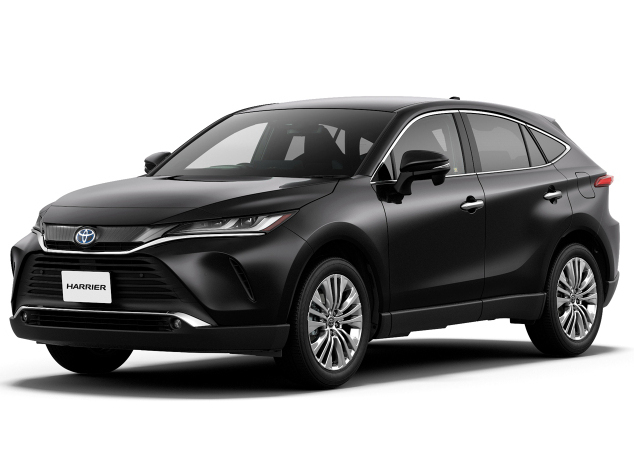
Toyota Harrier: The Perfect Blend of Fuel Efficiency and Premium Comfort
JamesApr 23, 2025
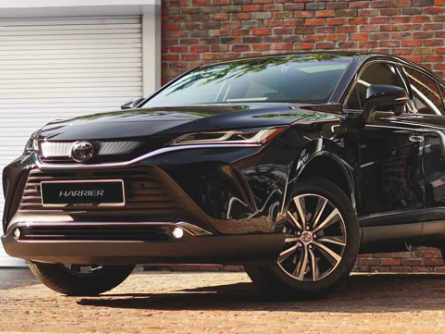
The 2023 Toyota Harrier is priced at RM 274,000, 2.0NA+CVT
LienJul 3, 2024

Toyota's Struggles with Digital Shift Delay Next-Gen EV Launch
LienJul 29, 2025

2026 Toyota Corolla Hybrid launched in North America, offering all-wheel drive option
Kevin WongJul 29, 2025
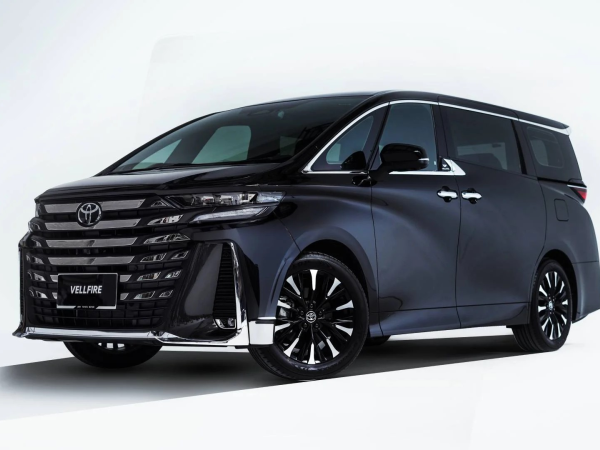
Toyota Vellfire Interior 2025 Review: A Luxury MPV Loved by Young Millionaires
LienJul 24, 2025
View More







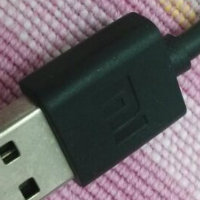




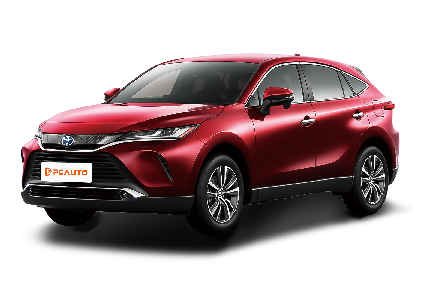





Pros
Cons